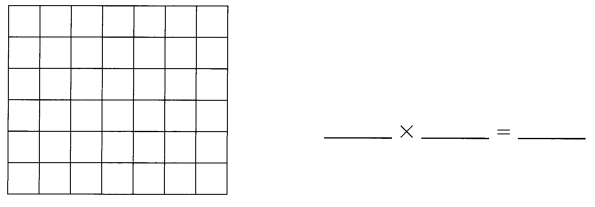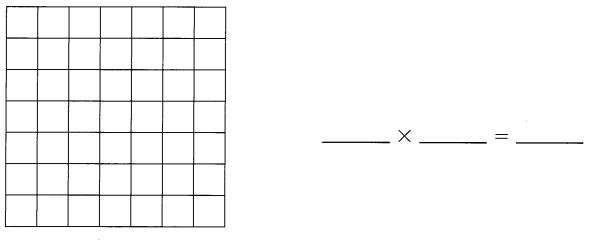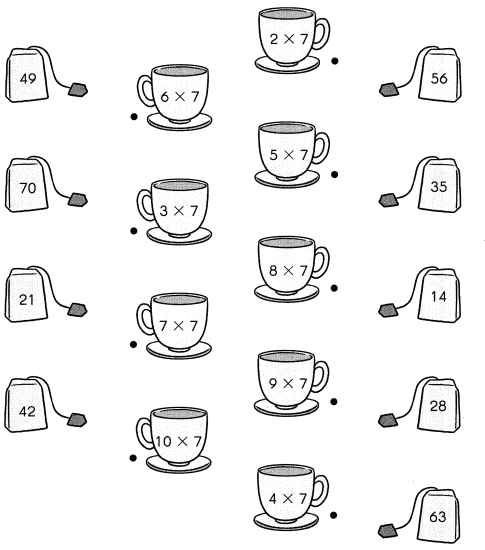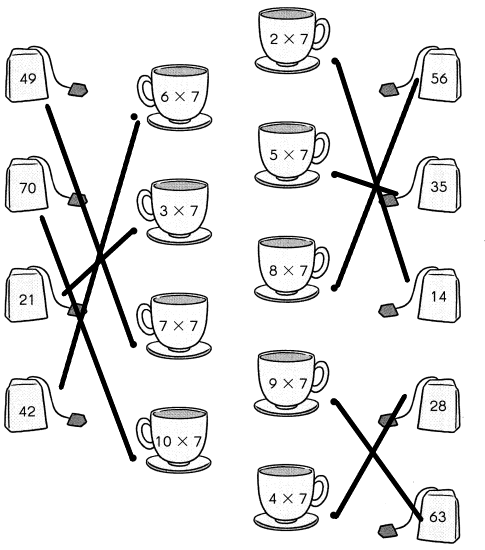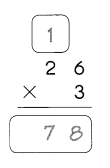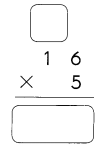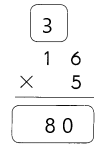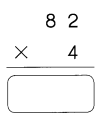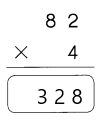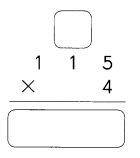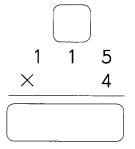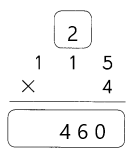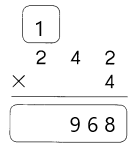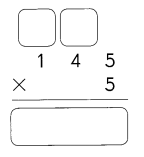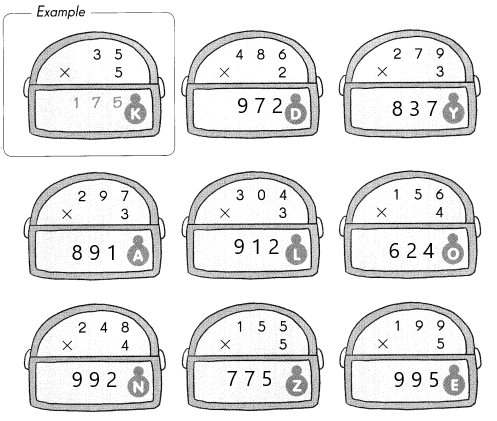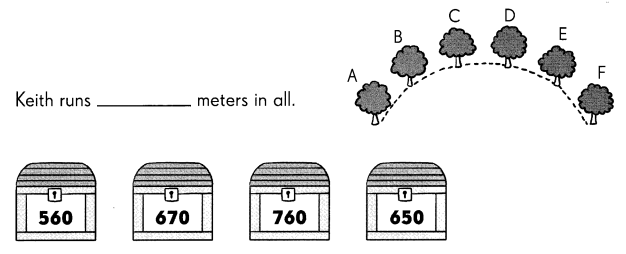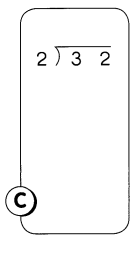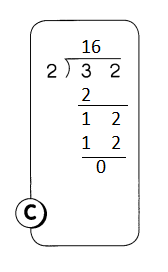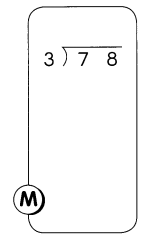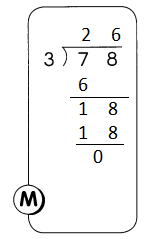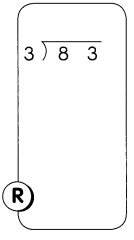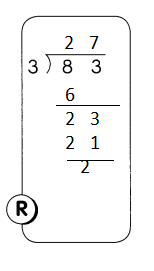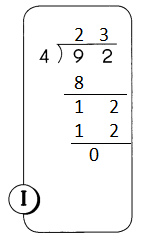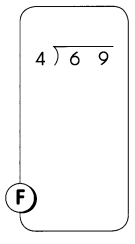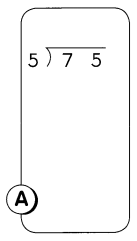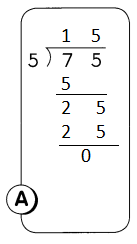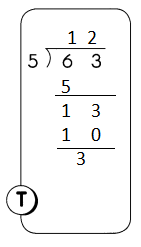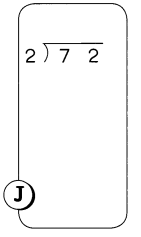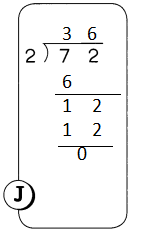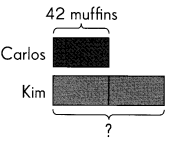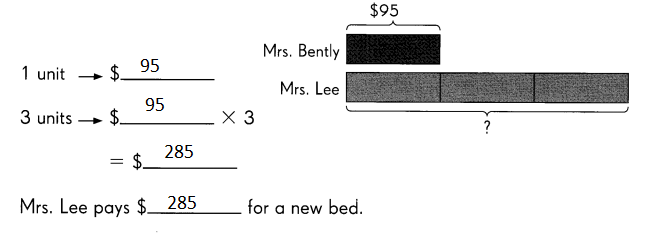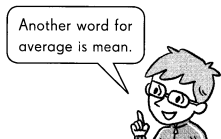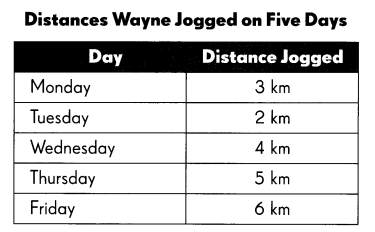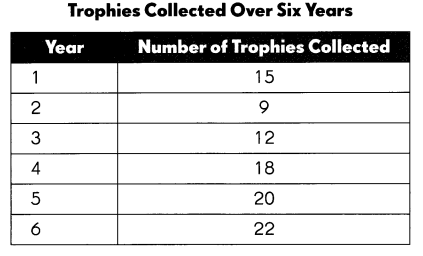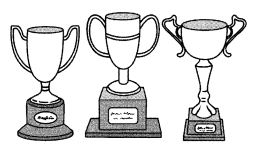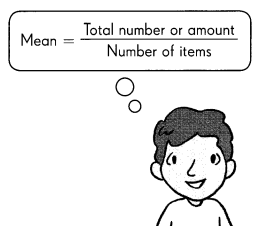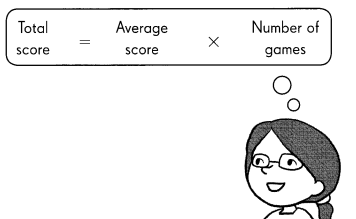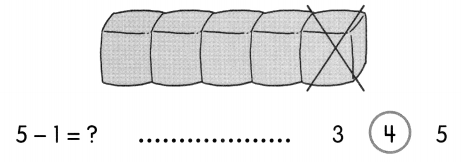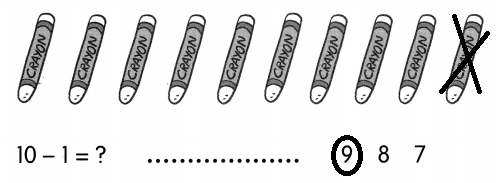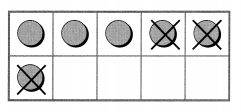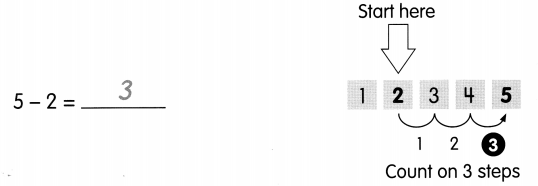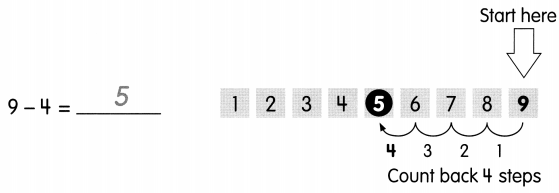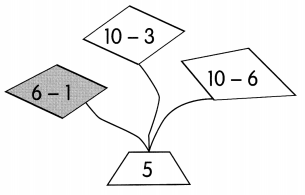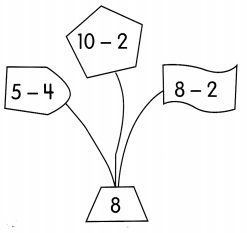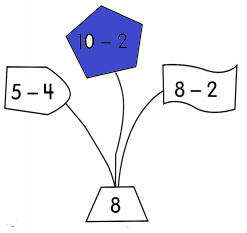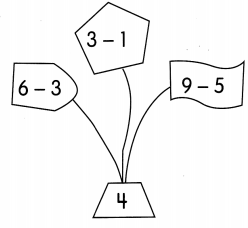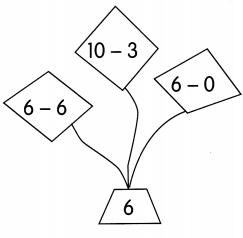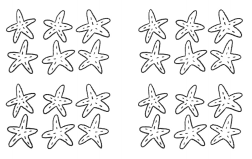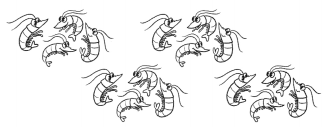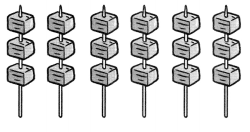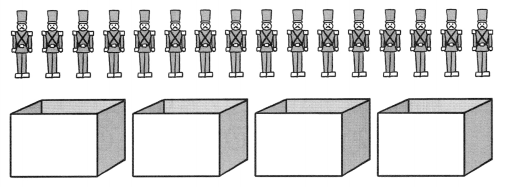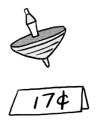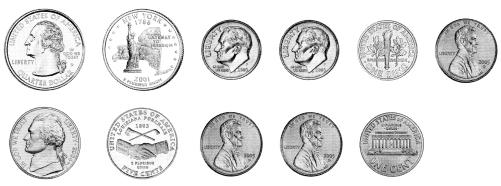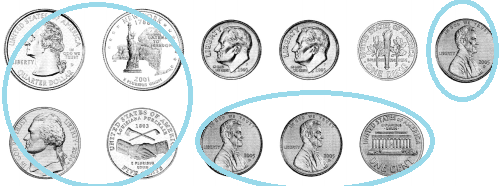Go through the Math in Focus Grade 1 Workbook Answer Key Chapter 17 Practice 4 Subtraction with Regrouping to finish your assignments.
Math in Focus Grade 1 Chapter 17 Practice 4 Answer Key Subtraction with Regrouping
Subtract.
Question 1.

Answer:
64 – 8 = 56.
Explanation:
Here, we will perform regrouping as the number 4 is less than 8. Regrouping is defined as the process of making groups of tens when carrying out operations like addition and subtraction with two-digit numbers or larger numbers. So the subtraction of 64-8 is 56.
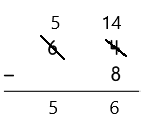
Question 2.

Answer:
93-5 = 88.
Explanation:
Here, we will perform regrouping as the number 3 is less than 5. Regrouping is defined as the process of making groups of tens when carrying out operations like addition and subtraction with two-digit numbers or larger numbers. So the subtraction of 93-5 is 88.
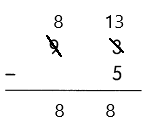
Question 3.

Answer:
78-9 = 69.
Explanation:
Here, we will perform regrouping as the number 8 is less than 9. Regrouping is defined as the process of making groups of tens when carrying out operations like addition and subtraction with two-digit numbers or larger numbers. So the subtraction of 78-9 is 69.
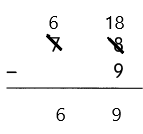
Question 4.

Answer:
87-8 = 79.
Explanation:
Here, we will perform regrouping as the number 7 is less than 8. Regrouping is defined as the process of making groups of tens when carrying out operations like addition and subtraction with two-digit numbers or larger numbers. So the subtraction of 87-8 is 79.
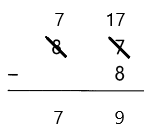
Question 5.

Answer:
50-2 = 48.
Explanation:
Here, we will perform regrouping as the number 0 is less than 2. Regrouping is defined as the process of making groups of tens when carrying out operations like addition and subtraction with two-digit numbers or larger numbers. So the subtraction of 50-2 = 48.
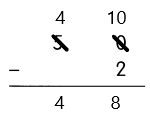
Question 6.

Answer:
80-6 = 74.
Explanation:
Here, we will perform regrouping as the number 0 is less than 6. Regrouping is defined as the process of making groups of tens when carrying out operations like addition and subtraction with two-digit numbers or larger numbers. So the subtraction of 80-6 is 74.
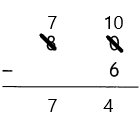
Fill in the missing numbers.
Question 7.
72 – 9 = _________
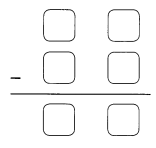
Answer:
72-9 = 63.
Explanation:
Here, we will perform regrouping as the number 2 is less than 9. Regrouping is defined as the process of making groups of tens when carrying out operations like addition and subtraction with two-digit numbers or larger numbers. So the subtraction of 72-9 is 63.

Question 8.
91 – 4 = ___________

Answer:
91-4 = 87.
Explanation:
Here, we will perform regrouping as the number 1 is less than 4. Regrouping is defined as the process of making groups of tens when carrying out operations like addition and subtraction with two-digit numbers or larger numbers. So the subtraction of 91-4 is 87.
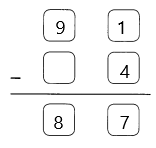
Question 9.
Kayla drops a ball into a number machine. Which ball is it? Write the number in the ○.

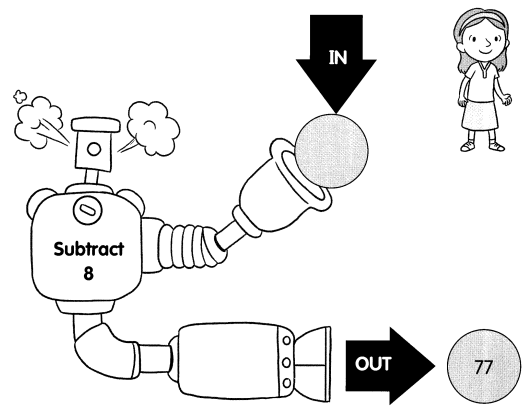
Answer:
The ball is 85.
Explanation:
Given that Kayla drops a ball into a number machine, it subtracts 8 and the output is 77. So to find the ball we will add 77+8 which is 85. So the ball is 85.

Subtract.
Question 10.

Answer:
52-38 = 14.
Explanation:
Here, we will perform regrouping as the number 2 is less than 8. Regrouping is defined as the process of making groups of tens when carrying out operations like addition and subtraction with two-digit numbers or larger numbers. So the subtraction of 52-38 is 14.
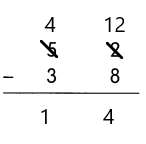
Question 11.

Answer:
76-49 = 27.
Explanation:
Here, we will perform regrouping as the number 6 is less than 9. Regrouping is defined as the process of making groups of tens when carrying out operations like addition and subtraction with two-digit numbers or larger numbers. So the subtraction of 76-49 is 27.
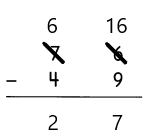
Question 12.

Answer:
85-38 = 47.
Explanation:
Here, we will perform regrouping as the number 5 is less than 8. Regrouping is defined as the process of making groups of tens when carrying out operations like addition and subtraction with two-digit numbers or larger numbers. So the subtraction of 85-38 is 47.
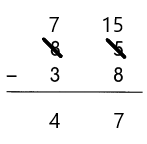
Question 13.

Answer:
53-47 = 6.
Explanation:
Here, we will perform regrouping as the number 3 is less than 7. Regrouping is defined as the process of making groups of tens when carrying out operations like addition and subtraction with two-digit numbers or larger numbers. So the subtraction of 53-47 is 6.
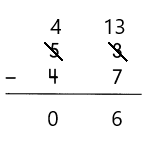
Question 14.

Answer:
90-56 = 34.
Explanation:
Here, we will perform regrouping as the number 0 is less than 6. Regrouping is defined as the process of making groups of tens when carrying out operations like addition and subtraction with two-digit numbers or larger numbers. So the subtraction of 90-56 is 34.
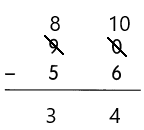
Question 15.

Answer:
73-56 = 17.
Explanation:
Here, we will perform regrouping as the number 3 is less than 6. Regrouping is defined as the process of making groups of tens when carrying out operations like addition and subtraction with two-digit numbers or larger numbers. So the subtraction of 73-56 is 17.
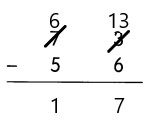
Fill in the missing numbers.
Question 16.
83 – 26 = __________

Answer:
83-26 = 57.
Explanation:
Here, we will perform regrouping. Regrouping is defined as the process of making groups of tens when carrying out operations like addition and subtraction with two-digit numbers or larger numbers. So the subtraction of 83-26 is 57.
Question 17.
95 – 38 = ____________

Answer:
95-38 = 57.
Explanation:
Here, we will perform regrouping. Regrouping is defined as the process of making groups of tens when carrying out operations like addition and subtraction with two-digit numbers or larger numbers. So the subtraction of 95-38 is 57
Question 18.
Ken drops a ball into a number machine. Which ball is it? Write the number in the ○.

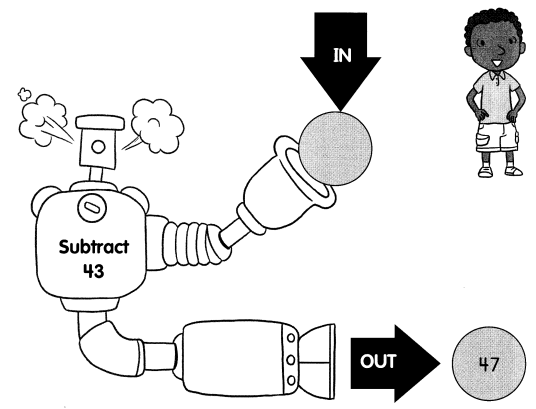
Answer:
The in ball is 90.
Explanation:
Gien that Ken drops a ball and it subtracts 43. The out ball is 47, so the in ball is 47+43 which is 90.
Color the correct answer.
Question 19.
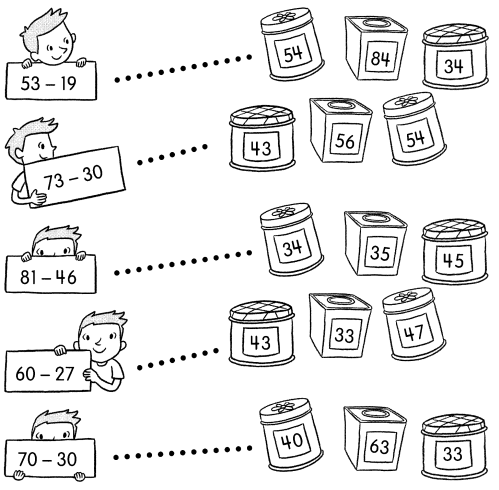

Answer:

Subtract.
Question 20.
56 – 8 = __________
Answer:
56-8 = 48.
Explanation:
Here, we will perform regrouping. Regrouping is defined as the process of making groups of tens when carrying out operations like addition and subtraction with two-digit numbers or larger numbers. So the subtraction of 56-8 is 48.
Question 21.
73 – 4 = __________
Answer:
73-4 = 69.
Explanation:
Here, we will perform regrouping. Regrouping is defined as the process of making groups of tens when carrying out operations like addition and subtraction with two-digit numbers or larger numbers. So the subtraction of 73-4 is 69.
Question 22.
67 – 8 = ___________
Answer:
67-8 = 59.
Explanation:
Here, we will perform regrouping. Regrouping is defined as the process of making groups of tens when carrying out operations like addition and subtraction with two-digit numbers or larger numbers. So the subtraction of 67-8 is 59.
Question 23.
75 – 9 = ____________
Answer:
75-9 = 66.
Explanation:
Here, we will perform regrouping. Regrouping is defined as the process of making groups of tens when carrying out operations like addition and subtraction with two-digit numbers or larger numbers. So the subtraction of 75-9 is 66.
Question 24.
50 – 40 = __________
Answer:
Explanation:
Here, we will perform regrouping. Regrouping is defined as the process of making groups of tens when carrying out operations like addition and subtraction with two-digit numbers or larger numbers. So the subtraction of
Question 25.
87 – 11 = ___________
Answer:
87-11 = 76.
Explanation:
The subtraction of 87-11 is 76.
Question 26.
90 – 50 = ___________
Answer:
90-50 = 40.
Explanation:
The subtraction of 90-50 is 40.
Question 27.
93 – 20 = __________
Answer:
93-20 = 73.
Explanation:
The subtraction of 93-20 is 73.
Question 28.
58 – 18 = __________
Answer:
58-18 = 40.
Explanation:
The subtraction of 58-18 is 40.
Question 29.
61 – 14 = __________
Answer:
61-14 = 47.
Explanation:
Here, we will perform regrouping. Regrouping is defined as the process of making groups of tens when carrying out operations like addition and subtraction with two-digit numbers or larger numbers. So the subtraction of 61-14 is 47.
Question 30.
47 – 39 = __________
Answer:
47-39 = 8.
Explanation:
Here, we will perform regrouping. Regrouping is defined as the process of making groups of tens when carrying out operations like addition and subtraction with two-digit numbers or larger numbers. So the subtraction of 47-39 is 8.
Question 31.
53 – 27 = __________
Answer:
53-27 = 26.
Explanation:
Here, we will perform regrouping. Regrouping is defined as the process of making groups of tens when carrying out operations like addition and subtraction with two-digit numbers or larger numbers. So the subtraction of 53-27 is 26.
Question 32.
30 – 28 = __________
Answer:
30-28 = 2.
Explanation:
Here, we will perform regrouping. Regrouping is defined as the process of making groups of tens when carrying out operations like addition and subtraction with two-digit numbers or larger numbers. So the subtraction of 30-28 is 2.
Question 33.
90 – 88 = __________
Answer:
90-88 = 2.
Explanation:
Here, we will perform regrouping. Regrouping is defined as the process of making groups of tens when carrying out operations like addition and subtraction with two-digit numbers or larger numbers. So the subtraction of 90 -88 is 2.

